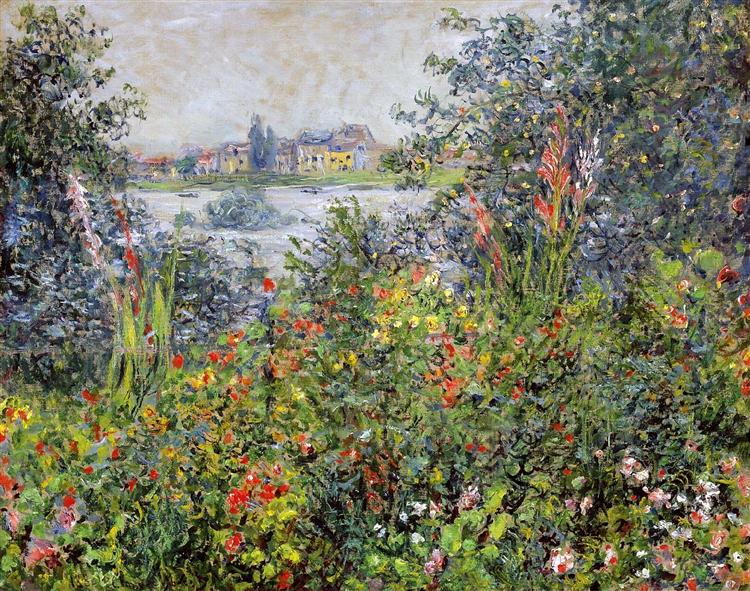תיאור
"Flowers at Vetheuil," painted in 1881 by Claude Monet, is a work that encapsulates the ethos of Impressionism, a movement that seeks to capture light and atmosphere through loose brushstrokes and a vibrant palette. Showing a lush arrangement of wildflowers in the foreground, this painting offers a window into Monet's sensitivity to nature and his mastery of depicting color and light.
The composition of the work focuses on a blanket of multicoloured flowers emerging against a green background evoking the freshness of the spring landscape. Monet uses a wide range of hues, from warm yellows to vibrant reds and soft blues, suggesting not only the diversity of the flowers, but also the constant interplay of light on them. The brushstrokes are dynamic and energetic, creating an almost textural effect that encourages the viewer to feel the vitality of the flowers, as if they were moving under a gentle breeze.
The painting's background, which features a blurred sky and scattered clouds, lends a sense of depth to the setting. Monet, known for his attention to changes in light throughout the day, here suggests a specific moment in time, where light appears to filter through the clouds, bathing the flowers in a soft glow. This interplay of light and color is an integral feature of Impressionism, which seeks to evoke sensations rather than accurate depictions of the physical world.
The work is also notable for its lack of human characters, allowing the viewer to become fully immersed in the experience of nature. The absence of figures within the work emphasizes the idea of awe at the natural beauty and tranquility of the surroundings, an aspect that Monet deeply appreciated. By removing the human figure, Monet invites the viewer to become an observer of the landscape, experiencing for themselves the peace and serenity that nature offers.
Monet painted Flowers at Vetheuil while he was in the Vetheuil region, where he lived for several years. This period was crucial for his artistic development, as it allowed him to experiment with the use of colour and light more intensely. The flowers depicted here can also be seen as a symbol of renewal, a recurring theme in Monet's work, which often sought to capture the ephemerality and beauty of nature.
It is interesting to note how Flowers at Vetheuil fits into a broader tradition within Impressionism, where the depiction of flora and the exploration of light become key themes. Other works by Monet, such as Water Lilies and Monet's Garden at Giverny, share this same contemplation of flowering and the natural environment. Through these works, Monet not only honored the beauty of the landscape, but also highlighted the emotional connection between humans and their environment.
In “Flowers at Vetheuil,” Monet manages to convey a sense of wonder and joy through nature, reminding us of the importance of beauty in our everyday lives. As viewers immerse themselves in the vibrant palette and evocative brushstrokes, they become complicit in the Impressionist experience, absorbing the light and color that Monet so masterfully captures. His signature style makes this work not only a testament to his genius, but also a continuing celebration of nature, still resonant today.
KUADROS ©, a famous painting on your wall.
Hand-made oil painting reproductions, with the quality of professional artists and the distinctive seal of KUADROS ©.
Painting reproduction service with satisfaction guarantee. If you are not completely satisfied with the replica of your painting, we will refund 100% of your money.

